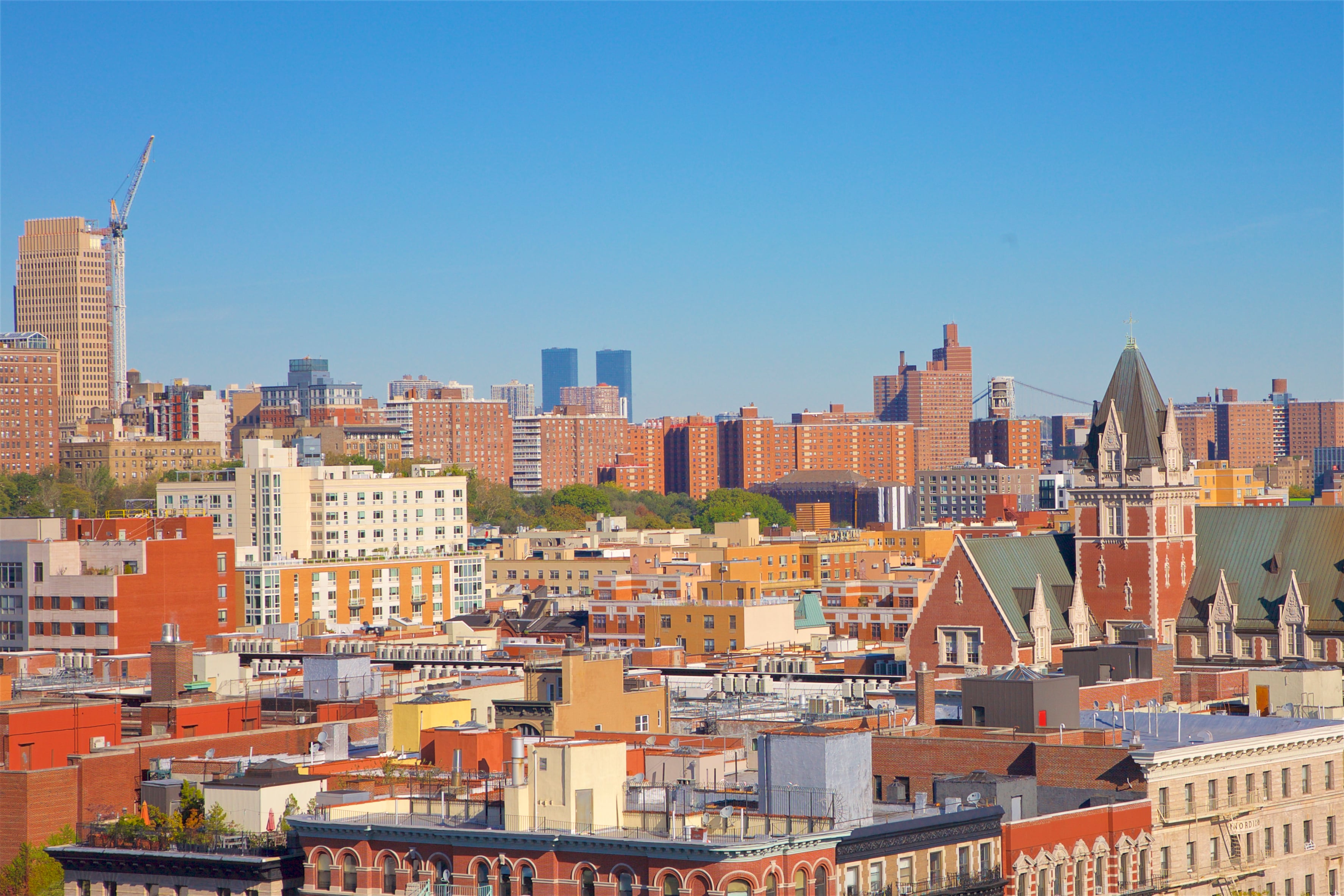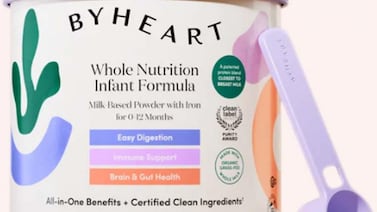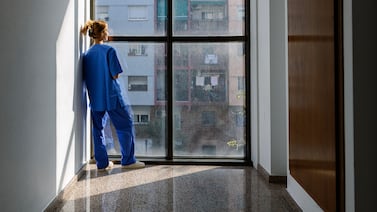This article originally appeared at Your Local Epidemiologist New York. Sign up for the YLE NY newsletter here. Public health, explained: Sign up to receive Healthbeat’s free New York City newsletter here.

Due to the large, ongoing Legionnaires’ disease outbreak in New York City, we’re taking a closer look at the illness and its biology this week. While the outbreak data shared is specific to New York City, much of this information can apply to outbreaks elsewhere. For our readers outside of New York City, know that we’ll be back with state-level updates next week. Let’s dive in.
While the Legionnaires’ outbreak in New York City’s Central Harlem has slowed, it hasn’t stopped. As of Thursday, there have been 109 cases, with 9 currently hospitalized and 5 deaths. The affected ZIP codes include 10027, 10030, 10035, 10037, and 10039.
The most recent case developed symptoms on Aug. 12, which means we’re likely closer to the end of the outbreak. That’s good news. It means that mitigation efforts (like identifying and cleaning contaminated cooling towers) are working.
But we’re not entirely out of the woods — we still might have some cases trickling in. People who may have been exposed before the cooling towers were cleaned could still get sick several days after their exposure.
What does this mean for you? We still need to stay alert, especially if you are someone at higher risk for severe illness (more below).
Since the outbreak began, I’ve gotten a lot of questions about Legionella (the bacteria) and Legionnaires’ disease (the illness it causes). Here are your top seven questions answered.
1. What are the symptoms, and who is most at risk?
Symptoms usually start 2–10 days after exposure and can include:
- Cough
- Fever
- Chills
- Shortness of breath
- Muscle aches
- Diarrhea
Most healthy people exposed won’t get sick. Those at highest risk are adults over age 50, smokers, and people with chronic lung disease, diabetes, cancer, or weakened immune systems.
2. Can I get Legionnaires’ disease from drinking water?
No.
- Legionnaires’ disease is caused by breathing in tiny water droplets containing Legionella bacteria. Water doesn’t enter the lungs when drinking unless someone chokes and accidentally inhales it.
- Stomach acid also likely kills Legionella bacteria if swallowed, so drinking water (even if contaminated) won’t cause illness.
On top of all this, outbreaks in New York City are typically caused by cooling towers, which are on different plumbing systems than residential water, meaning drinking water will not be contaminated.
3. If it’s in the air, why don’t more people get sick?
The bacteria have to be inhaled in a concentrated enough dose to cause illness. Many people breathe in small amounts without getting sick because their immune systems clear the bacteria.
But older adults, people who smoke, and people with chronic lung disease (including asthma) or weakened immune systems are much more likely to develop severe pneumonia. For example, I don’t have any of the risk factors for severe Legionnaires’ disease, so I felt comfortable going on a run through Central Harlem during the outbreak. If I had asthma, I would have found a different area to run in.
4. If it affects the lungs, why can’t it spread from person to person?
In New York City, Legionnaires’ disease almost always comes from cooling towers (though elsewhere in the United States, outbreaks have been linked to sources like hot tubs). Unlike the viruses that cause Covid-19 or flu, Legionella bacteria don’t spread easily between people— only one person-to-person case has ever been documented worldwide.
The reason lies in the biology of the Legionella bacteria.
- After someone inhales contaminated water droplets, the bacteria travel deep into the lungs and infect alveolar macrophages, a type of immune cell.
- Legionella mostly stays put in the lung immune cells — it doesn’t colonize the throat or nose, and you don’t find it in mucus or saliva. This is different from the viruses that cause Covid-19 and flu, which replicate in the upper airways and are spread through coughing, sneezing, or even talking.
This is also reflected in the way people are tested for Legionnaire’s disease: Clinicians often need a lower respiratory sample because infections are typically deep in the lungs. In contrast, to diagnose Covid or the flu, a simple nose or throat swab usually works.
5. What is being done to control the outbreak?
New York City has some of the most intensive and sensitive Legionella monitoring in the world, and was the first city in the world to have a cooling tower inspection program. Every day, special software scans health data across the city for clusters of pneumonia-like symptoms. If a pattern is detected, the health department springs into action: Inspectors test cooling towers for Legionella, and any tower that tests positive must be cleaned, disinfected, and retested by the building owner. The goal is to stop ongoing exposure and prevent future cases.
6. Why wouldn’t a health department share the building addresses of the affected cooling towers?
The health department’s decision on whether to release specific addresses is based on a balance of risk vs. public benefit, and how far along the investigation is (e.g., if there are more cooling towers to test). For the recent Central Harlem outbreak, eventually the city did release information on the buildings with positive tests.
Knowing the address of a contaminated cooling tower shouldn’t really change how you act. That’s because Legionella bacteria from cooling towers can travel long distances in the air, sometimes up to several miles.
The health department likely worries that releasing an address can create a false sense of security. Someone might think, “I’m a few blocks away, so I’m safe,” when that’s not how this bacteria behaves. Risk doesn’t scale linearly with proximity, and public health decisions aim to protect everyone, not just those near a known source.
Instead, health departments focus on identifying and remediating the source quickly, which is the most effective way to reduce risk to the public.
7. What do I need to do?
If you live or work in a ZIP code with a Legionnaires’ disease cluster and develop symptoms, call your doctor right away.
If you have any of the risk factors (age 50 or older, smoke or used to smoke, have a chronic lung condition like COPD or asthma, or are immune-compromised), be on alert for any symptoms and seek medical care right away if you develop any. Also, reduce time in the area of the outbreak (which I know is hard) and spend less time outdoors. For anyone else without risk factors and with no symptoms, I don’t think you need to worry.
Bottom line
Legionnaires’ disease spreads through airborne water droplets, not by drinking water or through person-to-person spread. During outbreaks, spread is slowed by identifying and cleaning contaminated cooling towers. If you live or work in ZIP codes affected by a Legionnaires’ outbreak and develop flu-like symptoms, contact your doctor right away, especially if you are over 50 years old, have chronic lung conditions, smoke, or are immunocompromised.
Love,
Your NY Epi
Dr. Marisa Donnelly, PhD, is an epidemiologist, science communicator, and public health advocate. She specializes in infectious diseases, outbreak response, and emerging health threats. She has led multiple outbreak investigations at the California Department of Public Health and served as an Epidemic Intelligence Service Officer at the Centers for Disease Control and Prevention. Donnelly is also an epidemiologist at Biobot Analytics, where she works at the forefront of wastewater-based disease surveillance.







